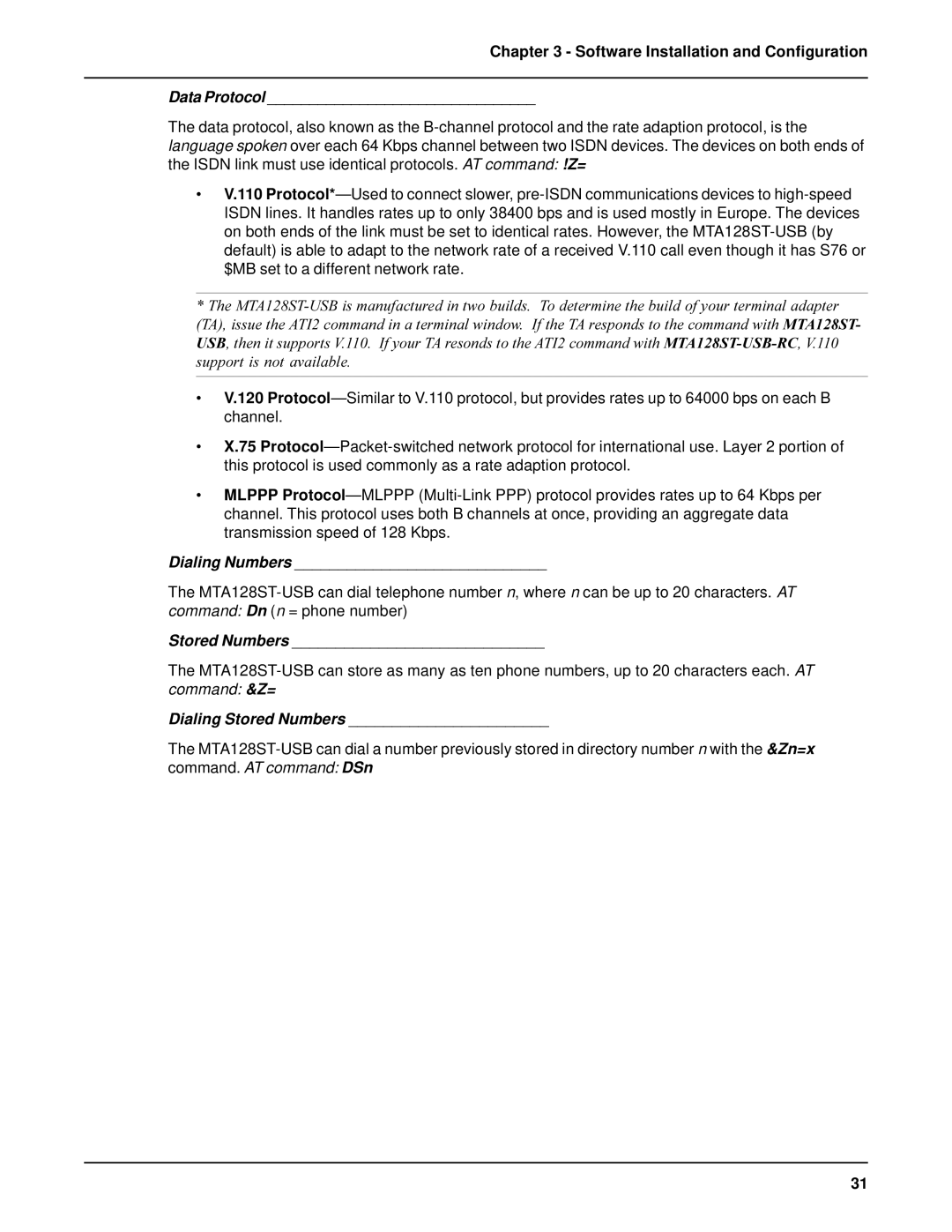Chapter 3 - Software Installation and Configuration
Data Protocol ________________________________
The data protocol, also known as the B-channel protocol and the rate adaption protocol, is the language spoken over each 64 Kbps channel between two ISDN devices. The devices on both ends of the ISDN link must use identical protocols. AT command: !Z=
•V.110 Protocol*— Used to connect slower, pre-ISDN communications devices to high-speed ISDN lines. It handles rates up to only 38400 bps and is used mostly in Europe. The devices on both ends of the link must be set to identical rates. However, the MTA128ST-USB (by default) is able to adapt to the network rate of a received V.110 call even though it has S76 or $MB set to a different network rate.
*The MTA128ST-USB is manufactured in two builds. To determine the build of your terminal adapter (TA), issue the ATI2 command in a terminal window. If the TA responds to the command with MTA128ST- USB, then it supports V.110. If your TA resonds to the ATI2 command with MTA128ST-USB-RC, V.110 support is not available.
•V.120 Protocol— Similar to V.110 protocol, but provides rates up to 64000 bps on each B channel.
•X.75 Protocol— Packet-switched network protocol for international use. Layer 2 portion of this protocol is used commonly as a rate adaption protocol.
•MLPPP Protocol— MLPPP (Multi-Link PPP) protocol provides rates up to 64 Kbps per channel. This protocol uses both B channels at once, providing an aggregate data transmission speed of 128 Kbps.
Dialing Numbers _____________________________
The MTA128ST-USB can dial telephone number n, where n can be up to 20 characters. AT command: Dn (n = phone number)
Stored Numbers _____________________________
The MTA128ST-USB can store as many as ten phone numbers, up to 20 characters each. AT command: &Z=
Dialing Stored Numbers _______________________
The MTA128ST-USB can dial a number previously stored in directory number n with the &Zn=x command. AT command: DSn

